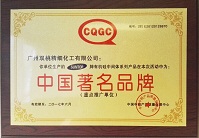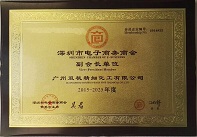
![]() E-mail: admin@gz-chemical.com
E-mail: admin@gz-chemical.com
Email us,best price and silane solutions for you!
Tel:+86 (20) 29035969

![]() E-mail: admin@gz-chemical.com
E-mail: admin@gz-chemical.com
Email us,best price and silane solutions for you!
Tel:+86 (20) 29035969


Researchers have demonstrated a technique that allows them to track microscopic changes
in metals or other materials in real time even when the materials are exposed to extreme heat
and loads for an extended period of time—a phenomenon known as "creep." The technique
will expedite efforts to develop and characterize materials for use in extreme environments,
such as nuclear reactors.
"Until now, you could look at a material's structure before exposing it to heat or load, then
apply heat and load until it broke, followed by a microstructural observation. That means you'd
only know what it looked like before and after loading and heating," says Afsaneh Rabiei,
corresponding author of a paper on the work and a professor of mechanical and aerospace
engineering at North Carolina State University.
"Our teand its behavior under different conditions of loading and heating."
Rabiei developed the in situ SEM technique for high temperatures and load (tension) as a
means of conducting high throughput assessments of the behavior of advanced materials. The
goal was to be able to predict how a material responds under a variety of heating and loading
conditions. The project was supported by the Department of Energy. The instrument can
capture SEM images at temperatures as high as 1,000 degrees Celsius (C), and at stresses as
high as two gigapascal—which is equivalent to 290,075 pounds per square inch.
For their recent demonstration of the technique's potential, researchers conducted "creep-
fatigue" testing on a stainless steel alloy called alloy 709, which is being considered for use in
nuclear reactors.
"Creep-fatigue testing involves exposing materials to high heat and repeated, extended loads,
which helps us understand how structures will perform when placed under loads in extreme
environments," Rabiei says. "That is clearly important for applications such as nuclear
reactors, which are designed to operate for decades."chnique, which is called 'in situ scanning
electron microscopy (SEM) heating and loading,' allows us to see the microscopic changes
taking place throughout the process. You can see how cracks form an d grow, or how
microstructure transforms during the failure process. This is extremely valuable for
understanding a material's characteristics
Guangzhou Double Peach Fine Chemical Co.,Ltd
Address: No 3401 Huangpu East Road, Huangpu District, Guangzhou, China
Tel:+86 (20) 29035969 Fax:+86(20)29035979
Tel/Wechat/Whatsapp:0086 13826126978 admin@gz-chemical.com